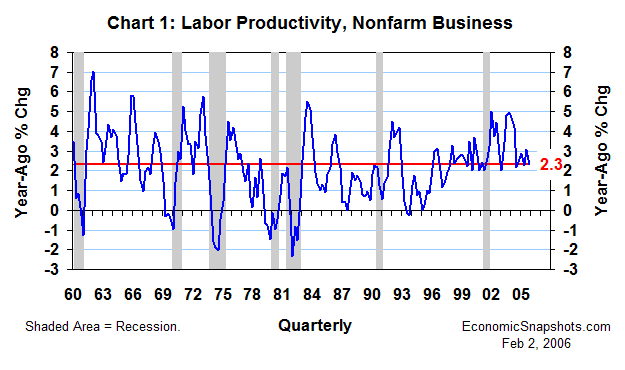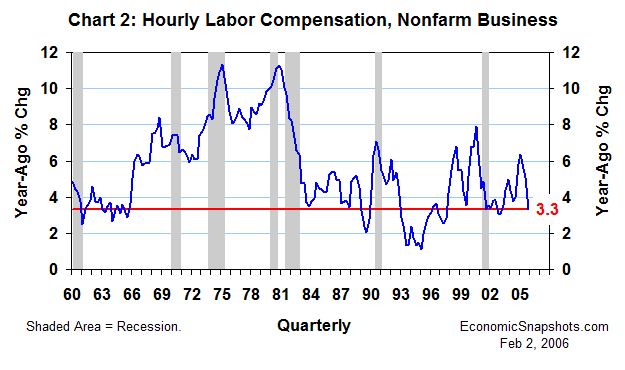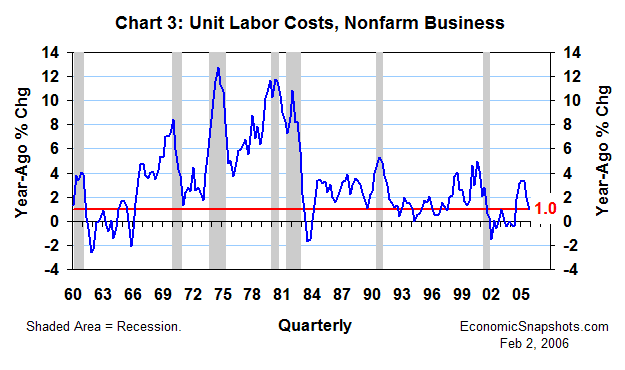
| Back to Index |
February 2, 2006 – Beyond the quarterly volatility, U.S. nonfarm businesses’ labor productivity rose by a solid 2.3% last year (measured Q4 to Q4). That’s roughly apace with 2004’s 2.6% increase (Chart 1).

We saw much stronger productivity gains earlier in this expansion, but those stronger increases relied on falling (or stagnant) employment. That wasn’t a sustainable trend for the long haul.
Growth in nonfarm businesses’ hourly labor compensation slowed to just 3.3% last year (also measured Q4 to Q4). The comparable increase for 2004 was 5.8% (Chart 2).

Nonfarm businesses’ output prices rose by 3.1% over the four quarters through Q4 (+2.7% in 2004). Thus, their real compensation costs edged down by 0.4% last year, compared to a 2.4% increase in 2004.
Reflecting this reduced compensation growth, nonfarm businesses’ unit labor costs (productivity-adjusted compensation costs) rose by just 1% last year (Q4 to Q4), compared to a 3.2% rise in 2004 (Chart 3).

For this same time frame, nonfarm businesses’ real unit labor costs fell by 2.1% last year, after edging up by 0.4% in 2004.
Bottom line: The FOMC’s fears of rising inflationary pressures in the labor market had yet to be realized, as of Q4 last year.
Suzanne Rizzo